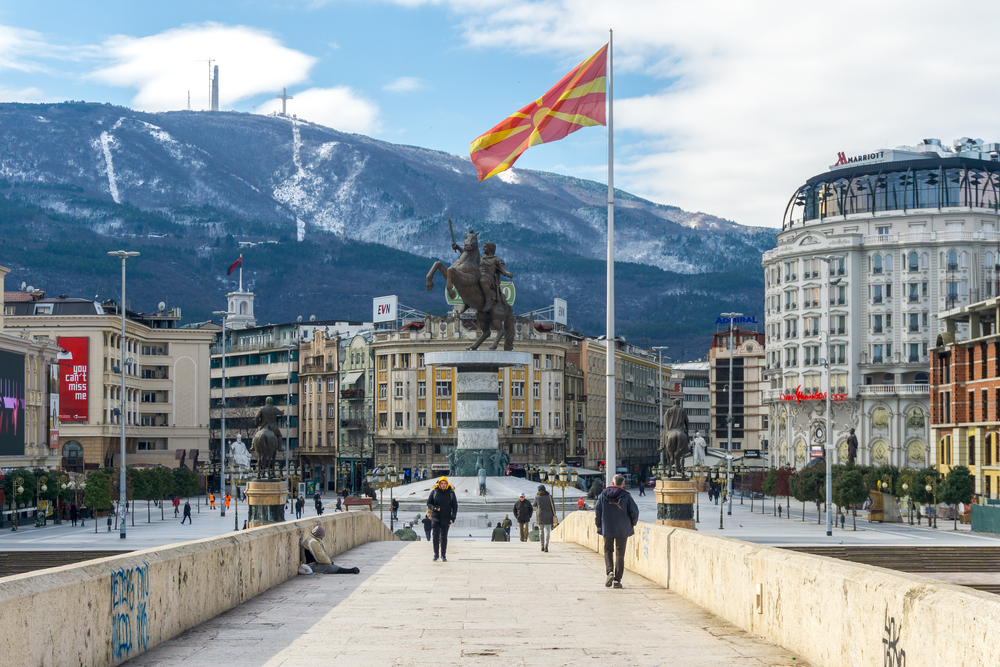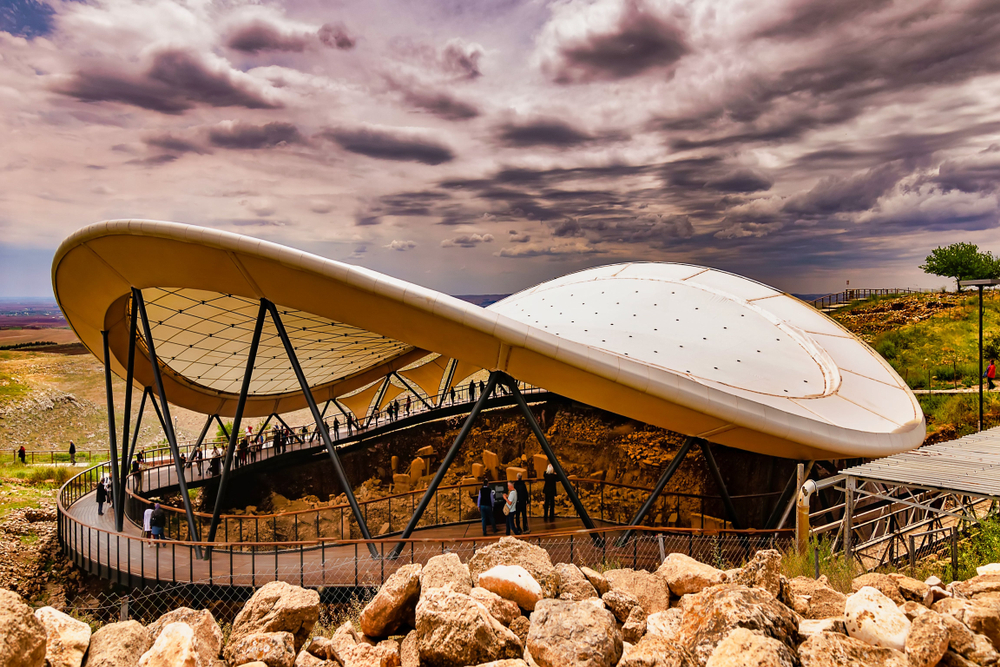Today’s modern world is under increasing threat of water and climate crises. The two critical phenomena, climate change and water scarcity are closely interlinked, where climate crisis affects and is also affected by global water resources. Even without a massive driving factor such as the climate change, the global water crisis, on its own, is already a significant threat to majority of the world population.
Among the huge water amount present on the earth, only 2.5% is freshwater and almost 69% of this freshwater is locked up in ice caps and glaciers. From another perspective, we can state that the exploitable freshwater amount on earth is even less than 1% of the total water resources, making it vulnerable and scarce in view of the geographically uneven distribution and the increasing pressures.
While water is at the core of sustainable development and production, it is also a basic human right as the United Nations (UN) General Assembly declared in 2010. Quite the reverse; according to UN Water data, 2.2 billion people lack reliable access to safely managed drinking water, 4.2 billion people live without access to sanitation and drought affects about 55 million people annually. This lack of water access and quality, therefore, significantly endangers livelihoods. The UN World Water Development Report 2020 (Water and Climate Change) refers to studies that predict continuation of water scarcity in the future. Due to that, around 52% of the entire population is expected to live in water-stressed regions by 2050.
Sustainability of water resources lies at the heart of a range of issues covering food and energy security, socio-economic development, protection of biodiversity and, of course, the battle with climate crisis. Water, either directly or indirectly, is the common denominator in realising the 2030 Agenda for Sustainable Development. The 17 Sustainable Development Goals (SDGs) set as global commitments towards a sustainable future are highly dependent on improved water management. It is worth noting that we already completed one year of the “decade of action” to deliver the SDGs.
An integrated perspective to climate change across the three highly vulnerable sectors, the so-called water-energy-food nexus, is crucial considering that the impacts of climate change are mostly cross-sectoral. The water-energy-food nexus, therefore, is central to sustainable development.
Between 2012 and 2020, World Economic Forum (WEF)’s global risks perception surveys displayed water crises and climate action failure among the top highest impact global risks, almost every year. As per risk likelihood, although climate action failure has been in top five since 2014, water crises stayed behind other more likely perceived risks. According to WEF’s 2021 Global Risks Report; extreme weather, climate action failure and human-led environmental damage are top three most likely risks of the next decade. Furthermore, with the new model of lifestyle that the COVID-19 pandemic pushed, digital power concentration and digital inequality became among the most likely risks. Similarly, infectious diseases took the top spot for highest impact risks, followed by climate action failure, mass destruction weapons and various environmental risks, including natural resource crises (constitutes food and water crises).
Water at the heart of life as we know it
The central place of water in our daily lives is sometimes disregarded; whereas, the amount of water consumed by a person is not limited with what is used for domestic and drinking purposes. It is important to always remember that production of everything we use, wear, eat, buy and sell consumes and/or pollutes water resources. The concept of water footprint is a measurement of water amount required to produce each of the goods and services we use.
Accordingly, virtual water is the water embedded in the products which is often unseen by the end-user although it is consumed throughout the value chain. This can be exemplified as follows and may provide an oversight on the impacts of our personal actions that we are not always aware of: behind the scenes of one cup of coffee, 130 litres of water is used to grow, produce, package and transport the coffee beans. Similarly, one hamburger requires 2,400 litres of water to be produced and one cotton shirt necessitates 2,500 litres. Therefore, with the every-day choices we make, we leave water footprints behind us.
Climate change and water crisis interaction
Freshwater is a key resource for human health, prosperity and security and as elaborated, water resources are under increasing pressure from climate change and other global drivers. According to Intergovernmental Panel on Climate Change (IPCC), climate model simulations for the 21st century are consistent in projecting temperature increases resulting in water temperature rise, sea level rise, and thus changes in coastal regions. Higher water temperatures and changes in extremes, including floods and droughts, are projected to affect water quality and intensify various forms of water pollution.
Those changes will affect agricultural production, risk the livelihoods and human security, threaten sustainable social-economic development, while damaging the ecosystems. The population growth and rapid urbanisation that keep the upwards trend are expected to create further pressures on water resources and have a tremendous impact on the natural environment. Accordingly, the impacts of climate change have been significant drivers of migration, and even more people are expected to leave their homes as extreme weather-related events become more frequent and intense.
The geographic distribution of water resources is uneven, so are the corresponding population densities and water qualities. One of the most common measures to demonstrate the water status of countries is the “Falkenmark water stress indicator”. It defines water scarcity in terms of total annual water resources available to the population in a region. According to Falkenmark (1989)[1], if the amount of renewable freshwater in a country is below 1,700 m3 per person annually, that country is considered a water-stressed one; below 1,000 m3, it is experiencing water scarcity and below 500 m3, absolute water scarcity.
To illustrate, the total amount of renewable freshwater resources in China in 2017 was approximately 2,739 billion m3 per year for a population of 1.4 billion. This left China with a Falkenmark indicator of 1,955, just above the 1,700 m3 limit of experiencing water stress[2]. On the other hand, with a very similar water reserve of 2,892 billion m3 per year, Canada’s indicator was 79,004 (water-rich – far above the 1,700 m3 limit) due to its lower population of 36 million.
Turkey’s shift from a water-rich to water-stressed country
Moving our focus from the globe to Turkey; the country was classified as water-rich for a long time; however, the situation has been reversed. This negative change is mainly due to increasing population, destruction of the natural environment, urbanisation, industrialisation, impacts of climate change and excessive extraction of water resources. According to DSI[3], Turkey’s annual exploitable freshwater amount is 112 billion m3 and it corresponds to 1,346 m3 per person for 2020. Please note that this amount is below the Falkenmark indicator threshold of 1,700 m3, meaning that Turkey is facing water stress. It is also important to mention that the same indicator was 3,145 in 1970 and 1,652 in 2000.
As seen, Turkey’s water demand increased dramatically in the last fifty years, mainly driven by the rapidly increasing population. Furthermore, scientific research shows that the countries in the Mediterranean Basin (including the parts of Turkey under the influence of Mediterranean climate), are among the most sensitive areas to global warming and future extreme climate conditions.
Climate change projections indicate that the average temperature of Turkey will increase and the precipitation received will decrease in the future, resulting in a reduction in the water resources, hence the exploitable water amount. In this regard, the aforementioned numbers for the per person water amounts will decline accordingly and our country will be placed amongst the category of “water scarce” countries. It is seen from the model projections which is based on a pessimistic scenario, that there will be 16% and 27% reductions in the water potentials in Turkey by 2050 and 2075, respectively[4].
The long-term model projections and predictions aside, Turkey has already been experiencing warming temperatures and significant changes in the precipitation patterns since the 1970s. The long-term downward trend in precipitation and significant drought conditions have been effective in a substantial part of the Mediterranean Basin including Turkey[5]. Furthermore, in addition to a decline in snowfall amount, the duration of snow cover also decreased. It is important to note that the precipitations display a declining trend in western and southern regions (where Mediterranean climate dominates), and the trend in annual total precipitation in the northern and eastern parts of the Black Sea Region is increasing. This is in line with the global impacts of climate change causing a shift in the distribution of the precipitation pattern rather than reducing the country-wide precipitation amounts[6].
According to Turkish State Meteorological Service’s 2020 Climate Assessment Report[7], 984 extreme weather events took place in Turkey in 2020, which is the highest recorded since 1971. Among these, the highest ratios belong to flood with 30%, storm with 27% and hail with 23%. A few extreme weather events that took place in the past three months can be exemplified as the tornado in İzmir (Çeşme) and the sand storm in Ankara (Polatlı). Furthermore, 2020 was the driest of the past five years in Turkey. For instance, in 2020, the reservoirs that supply water to İstanbul (the most populated city of the country) reached the lowest storage levels in the last 15 years. Although the snow and rainfall in early 2021 increased the water levels, this does not have a permanent impact to the prevailing water challenges.
The national strategies and action plans on climate change and various pillars of water management are critical at the governmental level. Despite the on-going efforts and certain level of governmental prioritisation on the environment, the clock is still ticking and the water resources are alarming. Turkey, therefore, needs urgent, effective, improved and collaborative actions before it is too late.
The recent stormwater harvesting-related regulatory modifications and the establishment of a commission in the Turkish Parliament for investigation of climate change and drought are promising. Water efficiency in agricultural management should also be another focus, as agriculture is the most water consuming sector. Furthermore, the current efforts for preparation of two separate laws on water and climate should be finalised and effectively implemented as soon as possible.
Individual baby steps to reach global targets
As our lives literally depend on water, we all have to make our individual efforts to protect and sustain its presence. Small or big, any change we make in the positive direction is likely to create a butterfly effect on the resources and develop resilience to climate change. We have the power to make a difference with every single choice we make. We can start with small steps in our daily routines and keep in mind that the deadline UN set for the earth only has nine years left!
Author: Çiğdem Cankara Kadıoğlu, WEglobal Sectoral Proposal Developer
[1] Falkenmark, M., J. Lundquist and C. Widstrand (1989), “Macro-scale Water Scarcity Requires Micro-scale Approaches: Aspects of Vulnerability in Semi-arid Development”, Natural Resources Forum, Vol. 13, No. 4, pp. 258-267.
[2] https://knoema.com/atlas/China/topics/Water#Total-Renewable-Water-Resources
[3] https://www.dsi.gov.tr/Sayfa/Detay/754
[4] Ömer Lütfi Şen, A Holistic View of Climate Change and Its Impacts in Turkey, Istanbul Policy Center, 2013, https://ipc.sabanciuniv.edu/Content/Images/CKeditorImages/20200327-01030010.pdf
[5] Murat Türkeş, Türkiye’deki 2013-2014 Kuraklığının ve Klimatolojik/Meteorolojik Nedenlerinin Çözümlenmesi, Konya Toprak Su Dergisi, 2014
[6] Türkeş, M. et. al., 2020. Impacts of Climate Change on Precipitation Climatology and Variability in Turkey, in N. B. Harmancioglu, D. Altinbilek (eds.), Water Resources of Turkey, Chapter 14, World Water Resources 2, https://doi.org/10.1007/978-3-030-11729-0_14, Springer Nature Switzerland AG 2020, pp. 467-491
[7] https://mgm.gov.tr/FILES/iklim/yillikiklim/2020-iklim-raporu.pdf







